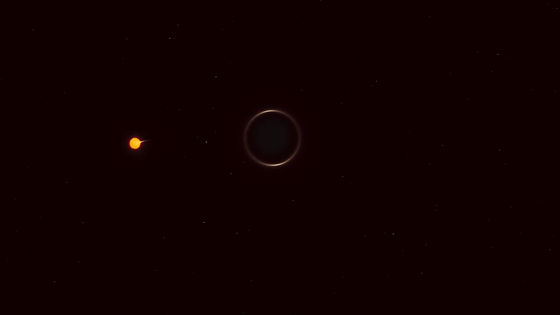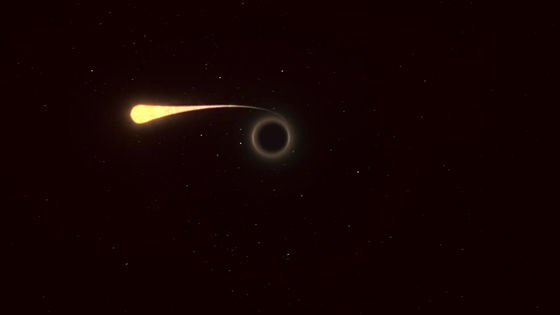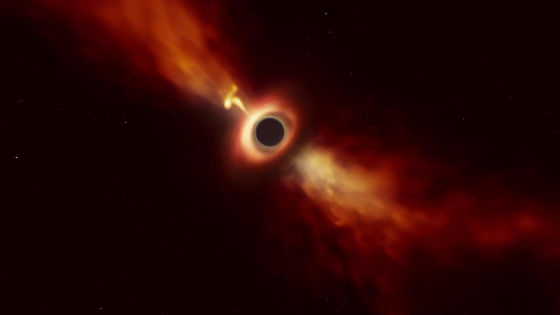Capturing the moment when a black hole 'spaghettis' a star and swallows it

On October 12, 2020, the
outflow powers the optical rise of the nearby, fast-evolving tidal disruption event AT2019qiz | Monthly Notices of the Royal Astronomical Society | Oxford Academic
https://academic.oup.com/mnras/article/499/1/482/5920142
Death by Spaghettification: ESO Telescopes Record Last Moments of Star Devoured by a Black Hole | ESO
https://www.eso.org/public/news/eso2018/
ESO announced on October 12 that it discovered ' AT2019qiz ', which is the closest known tidal disruption event to the earth, in September 2019. AT2019qiz found in the spiral galaxy of Eridanus was not only close to the earth but also shortly after it was generated, so there were few fragments and dust, and it was possible to observe it very clearly.
When the tidal disruption phenomenon begins when the celestial body approaches the black hole, the celestial body is stretched by too strong gravity, causing a spaghetti phenomenon that becomes elongated like spaghetti .
ESO has released the state of the spaghetti phenomenon obtained by observing AT2019qiz for 6 months as an image video on Twitter and YouTube .
2 / During such events, the star experiences'spaghettification': its material is stretched into strands as it falls into the black hole.
— ESO (@ESO) October 12, 2020
Credit: @ESO / M. Kornmesser pic.twitter.com/LZ2o3Bl0m2
The orange sphere is a star with just as much mass as the Sun.
The spaghetti phenomenon occurs when a star approaches a black hole with a mass of 1 million times or more. The star is elongated and swallowed by the black hole.

The speed of matter swallowed by a star into a black hole can reach up to 10,000 kilometers per second.

It is believed that half of the star's mass was swallowed by the black hole and the other half was released outward.

It is believed that when the spaghetti phenomenon occurs, the explosion produces strong electromagnetic radiation. However, since the fragments and dust of the celestial bodies swallowed by the black hole block the light like a curtain, it has not been possible to clearly observe the tidal disruption phenomenon.
'When a black hole devours a star, it creates a powerful explosion that obstructs our view. This time, we discovered the tidal disruption phenomenon early, and the black hole releases matter at a tremendous speed. Since I captured the moment I started, I was able to observe the black hole actually wearing a curtain of dust and debris. '
This discovery is said to be useful for understanding the behavior of supermassive black holes and substances in the maximum gravity environment, and the tidal disruption phenomenon that will be observed in the future.
Related Posts:







